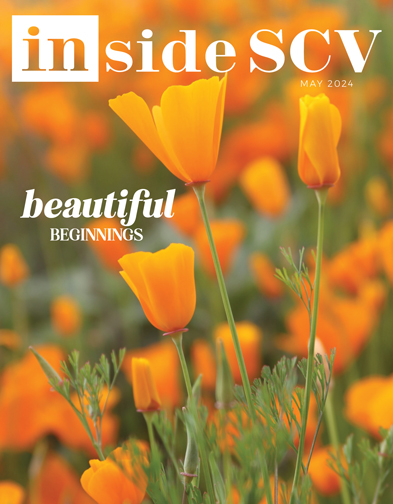I ♥ SCV
I Heart SCV
Getting Around, Getting By
May, 2011 - Issue #79
 |
Pulitzer-Prize-winning poet Gary Snyder could only spare 42 words when it came to our hometown. His "In the Santa Clarita Valley" says that instead of rivers flowing past colorful wildflowers, we have the traffic on Interstate 5 flowing past colorful gas station signs. Sigh. It may not be a place-affirming poem, but his concept is depressingly on target. Most of the world sees Santa Clarita as a place to move past with indifference.
"Many speakers seemed optimistic
about the project as a mixed-use,
walkable development that promises significant
JOB CREATION in Canyon Country."
about the project as a mixed-use,
walkable development that promises significant
JOB CREATION in Canyon Country."
Rail Fail
You know the high-speed train that's supposed to travel from San Francisco to LA in 160 minutes? The California High-speed Rail Authority has been releasing more details about how the project will ultimately take shape. The "Palmdale to LA Team" came out with recommendations in early spring, suggesting stops in Palmdale and Sylmar. High-speed trains would shuttle past Santa Clarita, but they wouldn't stop here.
Critics of the rail plan are many. Megan McArdle of The Atlantic ridiculed the idea of hundreds of miles of track through the Central Valley to serve non-existent passengers. Indeed, miserable boondocks like Bakersfield, Fresno and Merced are all set to receive stops - just not Santa Clarita. Others criticize the enormous price-tag, another liability for cash-strapped California. But while high-speed rail may be useless and expensive, if we're going to have trains barreling by every day, at least give us the option of not visiting a local train station. Mayor Marsha McLean, something of a transportation maven, argues an SCV Station is only fair. Claritans in Sand Canyon, where the tracks will likely pass, stand to receive all the noise and unpleasantness with no benefit in the form of a convenient train stop.
The HSR Authority promises they're listening to Santa Clarita's concerns, but that's not quite the same as acting on them.
Wildlife Corridors
Mayor McLean's complaints about high-speed rail don't end with the lack of stops. She's also worried that a rail line will cut through important wildlife habitat. Tracks may sever critical wilderness areas on Santa Clarita's eastern border. This is where mountains converge and wild animals move from one wide open space to the next. We're not the only species that likes to move around. The 14 is already a formidable obstacle, and noisy trains would only contribute to the problem.
This prompts the question of whether there are many big animals around anymore and whether they wander about very much. They are, and they do. Researchers in "urban ecology" have been studying wildlife in LA County for the past 10 years, and it seems that road underpasses and even culverts are widely used by animals to get from point A to point B. While a graduate student at CSUN, Sandra Ng used motion-triggered cameras to document everything from mule deer to bobcats and a mountain lion crossing roads via culverts, underpasses and tunnels. Roads are dangerous to cross and shortcuts beneath seem well-known and well-used by urban wildlife. The most-often seen species on Ng's cameras, however, was "human." So if you're the sort of person who likes to stroll through culverts, keep in mind that you may have some furry company.
View from Vista
Developments follow a predictable trajectory in Santa Clarita. The developer submits a proposal with a lot crammed into a little space, maximizing profit. The Planning Commission asks for some concessions to be made. A slightly revised plan comes before the city council, and a group of residents say that the new project is going to destroy, variously, a way of life, the environment, or community character. Then the project is approved.
But things went a little differently with Vista Canyon. It's a very big project with more than 1,000 residential units and nearly one-million square feet of commercial space on 185 acres. There will be massive grading, and it's located next to the sensitive Santa Clara River. Yet many speakers seemed optimistic about the project as a mixed-use, walkable development that promises significant job creation in Canyon Country. One of the selling points was a focus on transportation. People can potentially walk from home to work, and there are plans for a bus-transfer station and a Metrolink station at the site. To help the wildlife get around, there are even provisions for a wildlife corridor.
Ironically, the thing that attracts many people to Vista Canyon is the fact that they'll have plenty of options for how to get out of it. We seem to heart SCV most when we have the option of not being here.
This column is intended as satire and a (sometimes successful) attempt at humor. Suggestions, catty comments and veiled threats intended for the author can be e-mailed to iheartscv@insidescv.com.
|
||||||||||||||||||||||||||||





